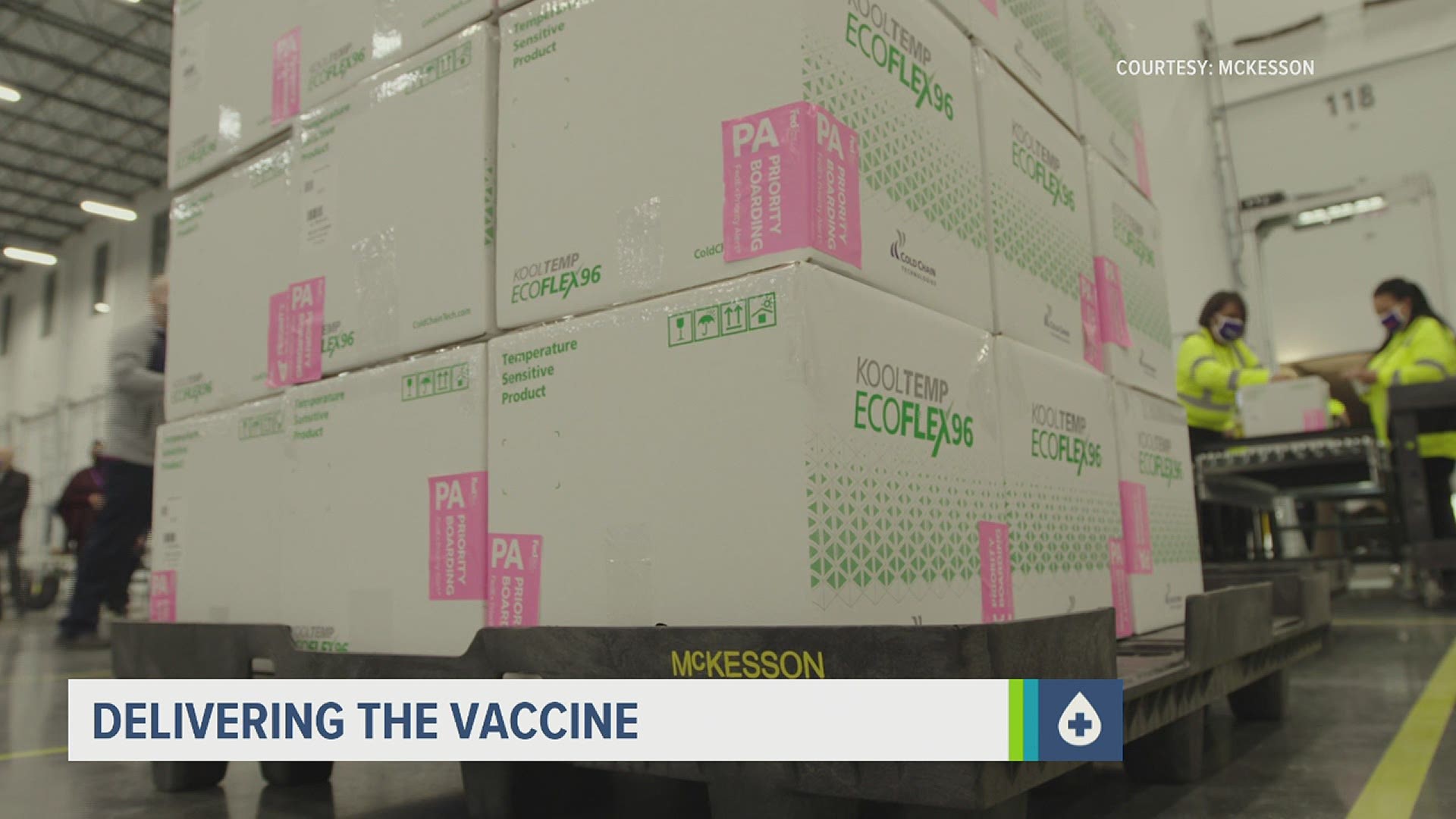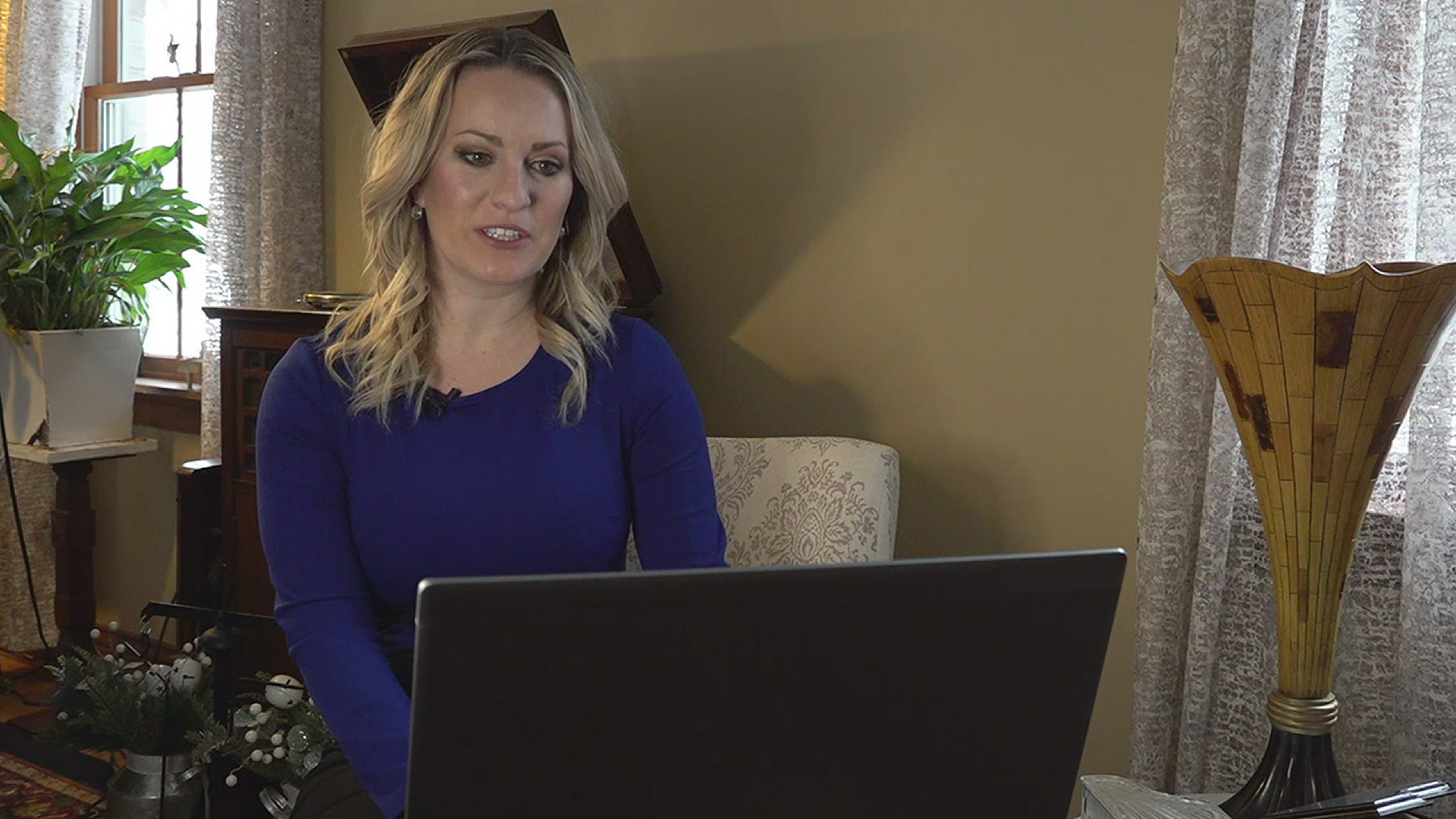How do doses of the COVID-19 vaccine get delivered across states?
Just ask Middletown native Matthew DiLoreto who is one of many making it happen as part of the Healthcare Distribution Alliance (HDA).
"As of now we've shipped, I think it's 62 or 63 million vaccines," said DiLoreto who is Vice President of State Government Affairs for HDA and is an expert at juggling logistics.
The wholesaler's latest mission: to organize delivery of the Moderna shot as well as the Johnson & Johnson vaccine from the manufacturer to the provider. It's a vital and essential process to get vaccinations into arms.
"Everybody knew that this pandemic was unprecedented," said DiLoreto, as he noted HDA has tackled other health emergencies in the past including the H1N1 and Ebola pandemics. This time around though, the emergency is on a much larger scale.
HDA doesn't decide how the vaccines are distributed after the deliveries are dropped off. It also doesn't play a role in deciding where the vaccinations are delivered or how much each state receives. DiLoreto said those allocation decisions are made by the federal government.
HDA does, however, make sure the vaccine reaches its destination and it is able to deliver quickly.
"It is going out the backdoor in no more than 24 hours on a truck and it's arriving in a state location," said DiLoreto. A 24-hour turnaround that the company said it's able to achieve even as the COVID-19 vaccinations require a strict set of rules.
"These products are extremely specialized. They need special handling. Ultra cold is the word that's been thrown around a lot," said DiLoreto.
With the addition of the Johnson and Johnson vaccine and more vaccinations expected to earn FDA approval this year, the HDA's job is only expected to get more complicated. But DiLoreto said his company is happy deliveries of the vaccine and shots are expected to ramp up as that means more shots are getting to more people.
Meantime, the HDA remains in constant communication with state and federal government leaders, including the Biden administration, on the rollout.
When FOX43 asked DiLoreto how he would describe this time period to future generations, he laughed and said he would tell them it's a lot of work first and foremost.
"It is consistently reported inside the halls here of HDA that this will be a time that you look back and say we were involved in this effort," he said. "....It was definitely a pleasure to be kind of on the front lines responding to this effort."
Learn more about how the process works
Learn more about HDA:
· The Healthcare Distribution Alliance represents primary pharmaceutical distributors—the vital link between the nation's pharmaceutical manufacturers and pharmacies, hospitals, long-term care facilities, clinics and others nationwide.
· As the logistics experts of healthcare, distributors connect 180,000 healthcare providers and pharmacies with 1,400 drug manufacturers across the country, streamlining the supply chain to reduce costs and save the nation's healthcare system time and money.
· Throughout COVID-19, distributors' role delivering critical medicines and healthcare products is even more important. · Distributors responded to the unprecedented demands and continue to work around-the-clock to increase medical capacity and enhance our national supply of critical medications and healthcare supplies required to fight this pandemic. · Distributors are playing a crucial role distributing COVID-19 vaccines and the critical supplies needed for administering.
o The federal government designated McKesson, an HDA member company, the centralized distributor of COVID-19 vaccines once they are approved by the FDA (except for the Pfizer vaccine). McKesson served in this role during the H1N1 pandemic, and like then, will distribute vaccines to point-of-care settings across the country at the CDC's direction. McKesson is also distributing "ancillary supplies," such as needles, syringes and face masks.
o Distributors have long worked with federal, state and local government officials to facilitate the distribution of vaccines and pharmaceuticals to accommodate surging demand following public health emergencies and natural disasters.
§ H1N1, Ebola – two examples
Distributing vs Administering:
· Each part of the supply chain has a distinct role in getting patients safely vaccinated.
o Manufacturers create the vaccine supply, distributors move vaccines and "ancillary supplies" to points of administration and providers administer the vaccines to their patients under the allocation and prioritization guidelines established by the federal government in coordination with states and public health experts.
· These roles and responsibilities are critical to understand as the nationwide vaccination campaign is now underway.
o As of February 7, 2021, approximately 59.3 million doses have been distributed; and approximately 41.2 million doses have been administered.
§ In Pennsylvania 2,292,500 doses have been distributed and 1,407,839 doses have been administered.


